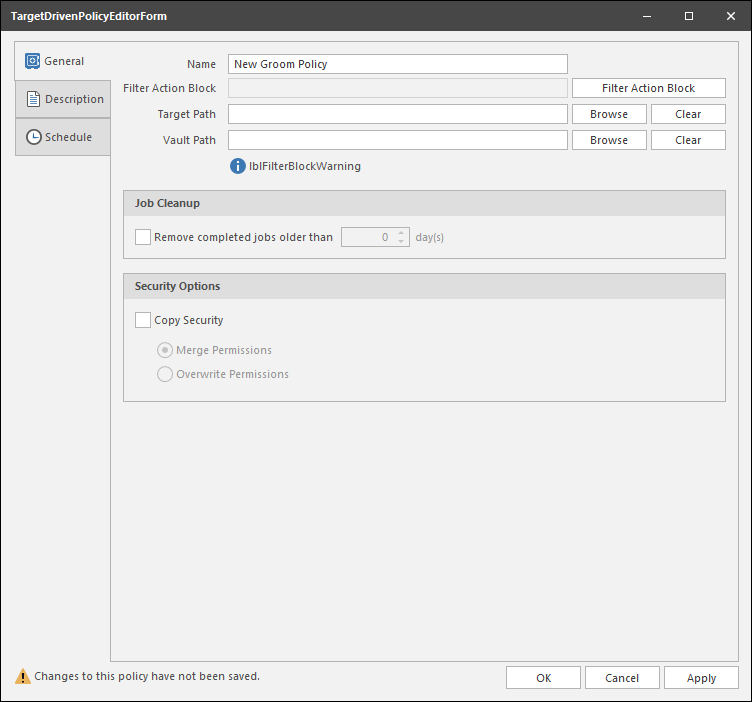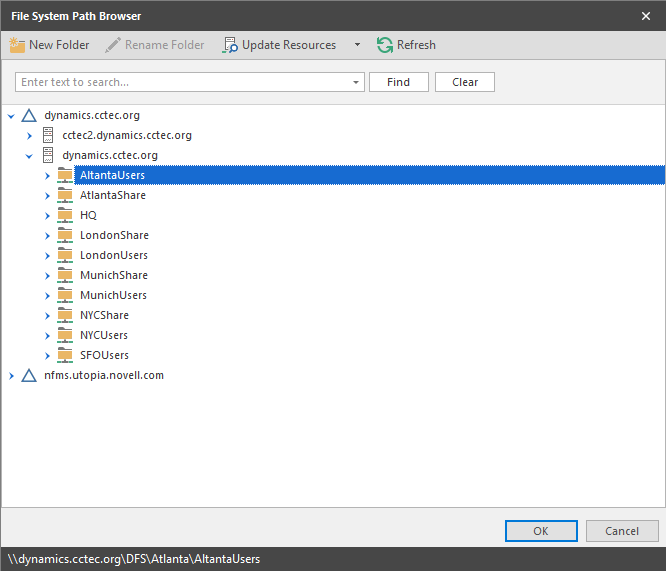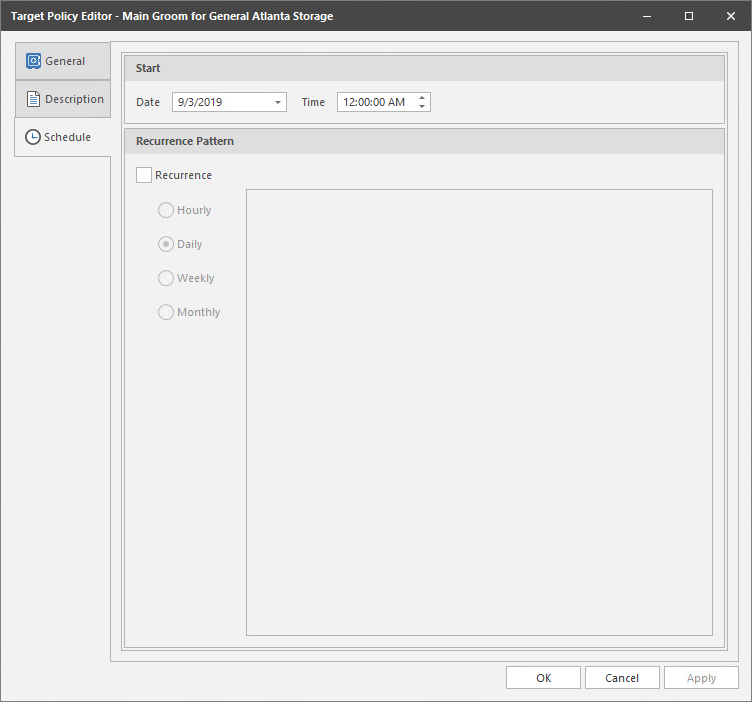10.2 Create a Groom Policy
Groom policies remove files from any arbitrary path to a vault location. The files that are removed and the frequency that the removals are performed are in accordance to the specifications that you establish.
10.2.1 Creating an Action Block for the Groom Policy
A Groom policy utilizes groom specifications that have been established and saved in an Action Block.
-
In the Admin Client, click the Target Driven tab.
-
Click Action Blocks.
-
In the Manage menu, select New > Filter.

-
In the Create New Filter Action Block dialog box, give the new Action block a descriptive name.
For example, Main Groom Rules.
-
Click OK.
The Rule Editor dialog box appears.

-
Establish your groom rules by specifying in separate rules, the file or folder types to be vaulted or deleted, and under which conditions they are to be ignored.
NOTE:For detailed procedures on how to set up groom rules, see Section 6.5.9, Setting Groom Rules.
-
When you have finished creating your groom rules, close the Action Block Editor.
10.2.2 Creating a Groom Policy
With the groom rules now saved to an Action Block, you can now create the Groom policy.
-
In the Admin Client, click the Target Driven tab.
-
Click Policies.
-
Select New > Groom Policy.

-
In the Name field, give the Groom policy a descriptive name.
For example, Main Groom for General Atlanta Storage.
-
Click Filter Action Block.
-
In the Action Block Selector dialog box, locate and select the Action Block you created in Section 10.2.1, Creating an Action Block for the Groom Policy.
-
Click the Browse button that pertains to the Target field.
-
In the File System Path Browser, specify the location in the file system from where you will be grooming files for this policy.

-
Click the Browse button that pertains to the Vault Path field.
A vault path is not required if the filter block does not contain a vault action. If the filter is later updated to add a vault action, then a vault path is required.
-
In the File System Path Browser, specify the location in the file system where you want groomed files stored for this policy.
-
Select the Remove completed jobs older than check box and specify the number of days that a Groom task from this policy is listed on the Jobs list before it is purged.
-
(Conditional) If you want your users to be able to continue to access groomed files from the new vault location, select the Copy Security check box and choose one of the following options:
-
Merge Permissions: Merges permissions from the source to the target if the target contains permissions that are not present in the source. This applies to all folders and files in the source folder structure.
Overwrite Permissions: Overwrites permissions in the target with those found in the source. This applies to all folders and files in the target folder structure.
-
-
Click Apply to save your settings.
-
Click the Description tab and enter any information you want about the policy.
-
Click Apply.
-
Click the Schedule tab.

-
In the Date field, specify the date you want the policy to be initially invoked.
-
In the Time field, specify the time you want the policy to be initially invoked.
-
(Conditional) If you want the Groom policy to run on a recurrent basis, select the Recurrence check box and then select one of the options.
-
Click Apply to save the schedule.
-
Click OK.